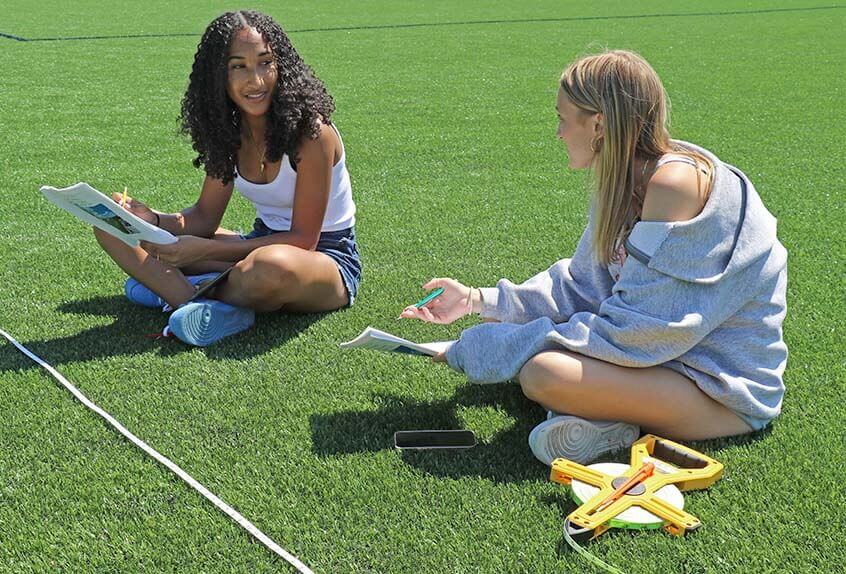News
Who knew that Poly’s new Roventini Baseball Field could be part of a geometry class? Everywhere you look there are triangles, rectangles, trapezoids, and the volume of bricks in a wall waiting to be determined.
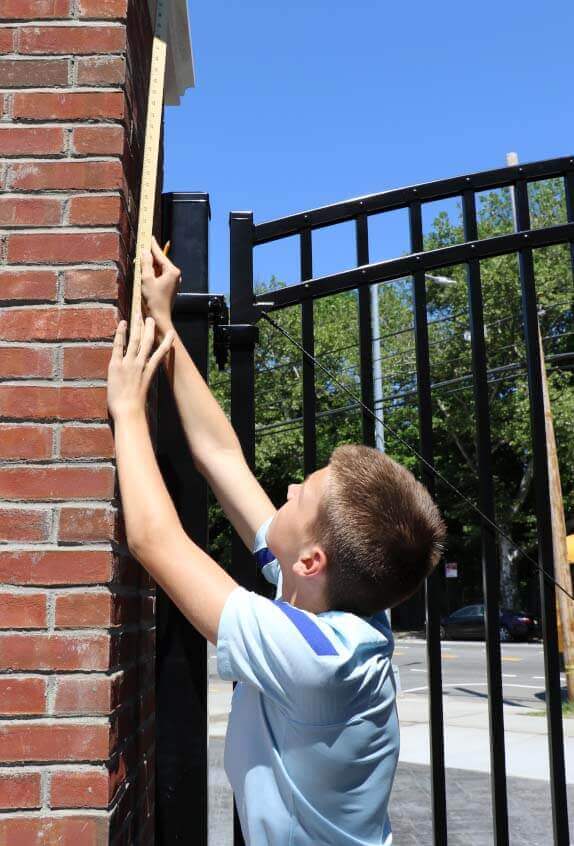
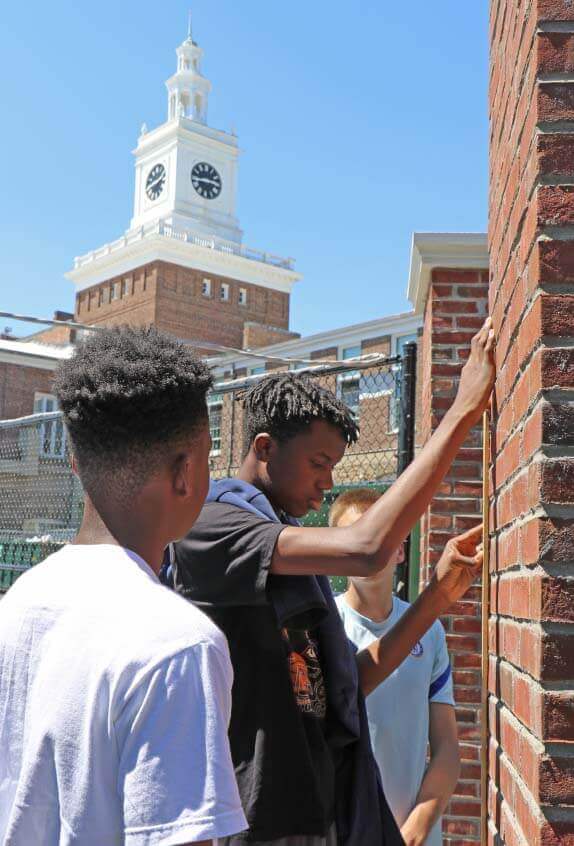


For their Final Demonstration of Learning, Grade 9 Geometry students in both Ira Feldman’s and Linda Russo’s classes were required to solve three out of seven simple problems and one of four complex problems using geometric properties to measure the baseball field and its environs. Each question was to be answered neatly on 11 X 17 plain paper or graph paper. All the steps for the solution were to be shown, including any equations that were input into a calculator.
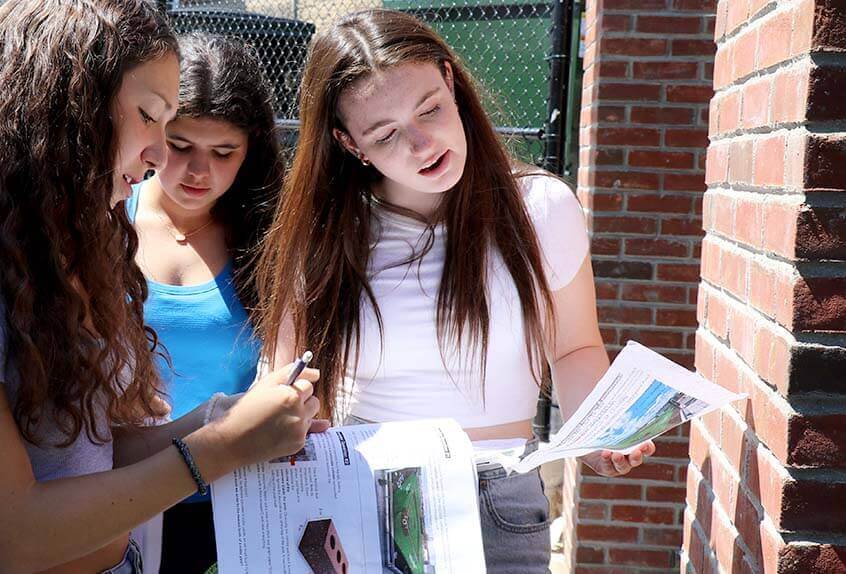
and Isabella Incata ‘25
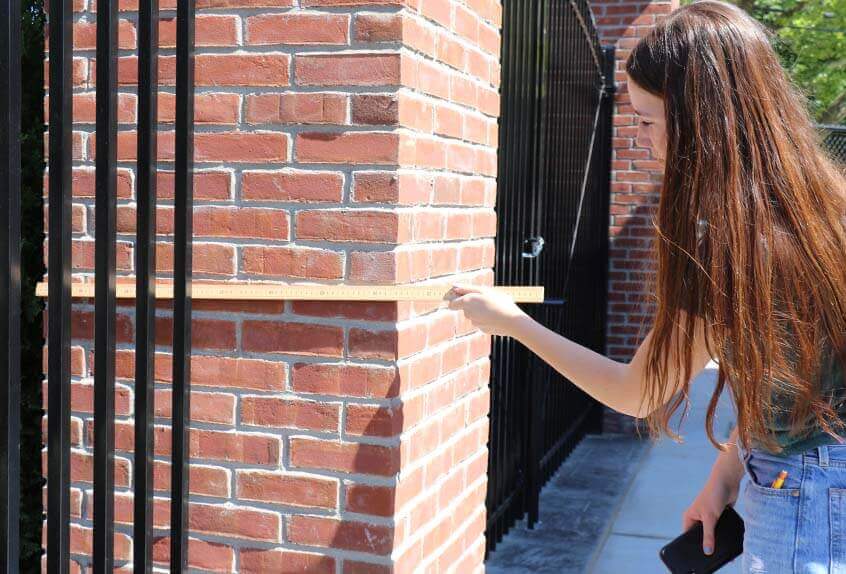
For example, in one of the simple questions, students were asked: “What is the entire volume of the second upright brick post [at the gate]? Only count from the base to just under the white cap at the top. Do not count the cap itself. Present the answer to the nearest cubic yard.”
Other simple problems called for students to determine the volume of the open area of the visitors’ dugout or to measure the area of the green surface on the side of the Press Box closest to Commons and adjacent to the back parking lot. “Your task here is to determine its area. It is a compound shape, so keep that in mind.”
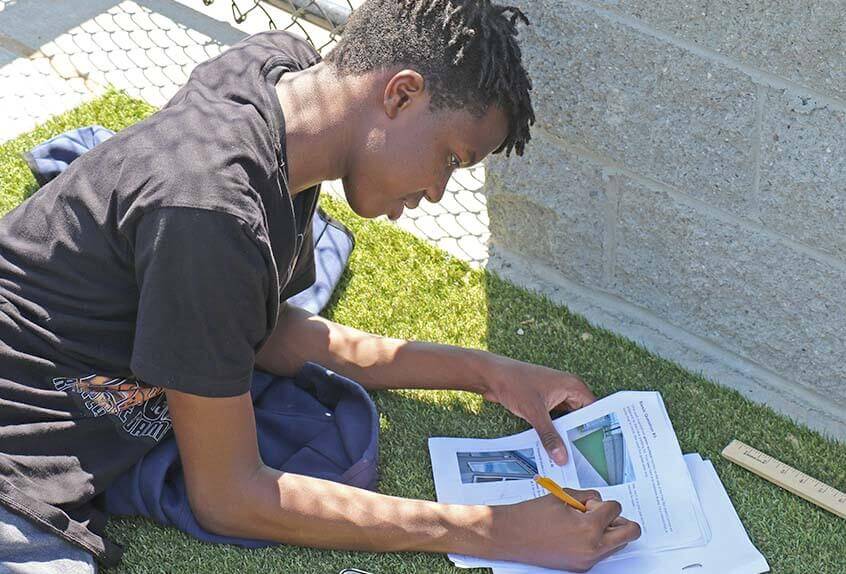
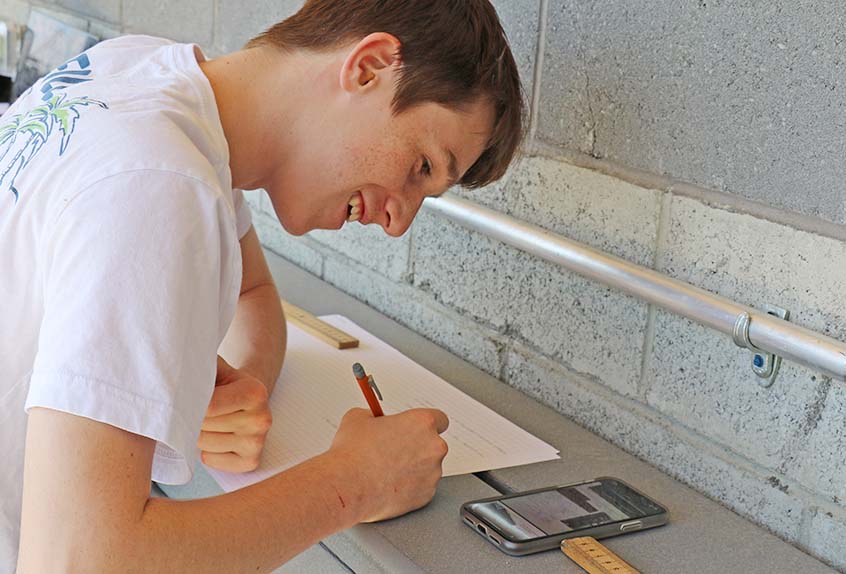
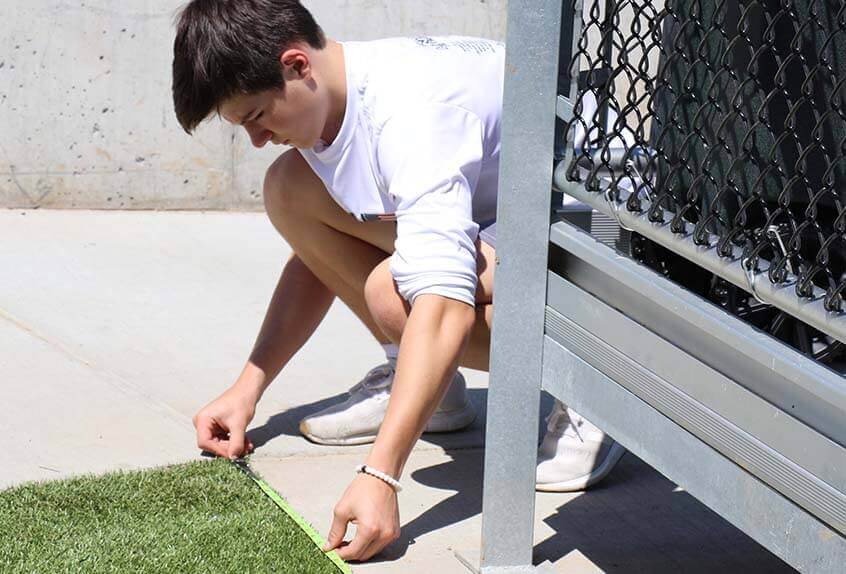
Solving Complex Problems
For one of the complex problems, students went back to the brick column by the gate, which was constructed of a concrete column surrounded by one layer of bricks. Students were given the dimensions of one brick and told, “Your task is to determine the volume of the concrete inside the post. Obviously you cannot see it as it is covered in brick.” In the shade, students collaborated to determine how many cubic yards, to the nearest tenth of a cubic yard, of cement are at the center of the column.
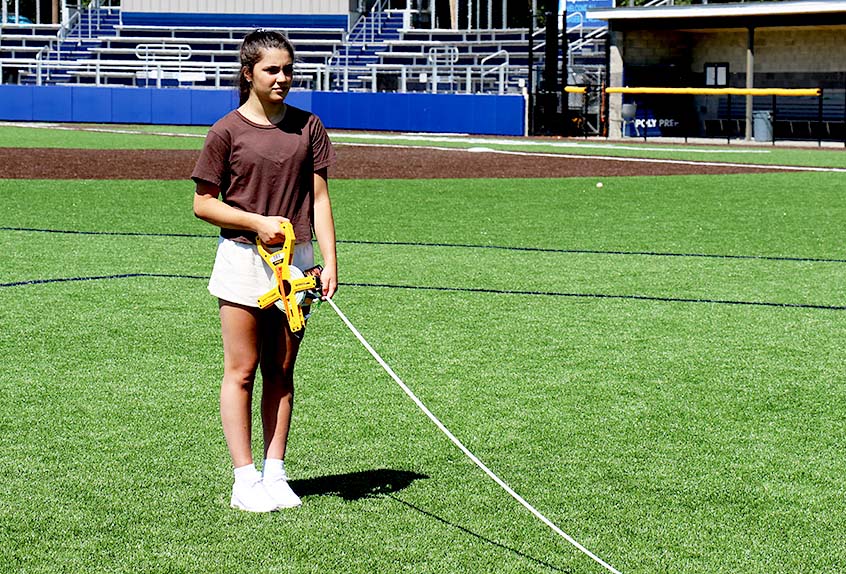
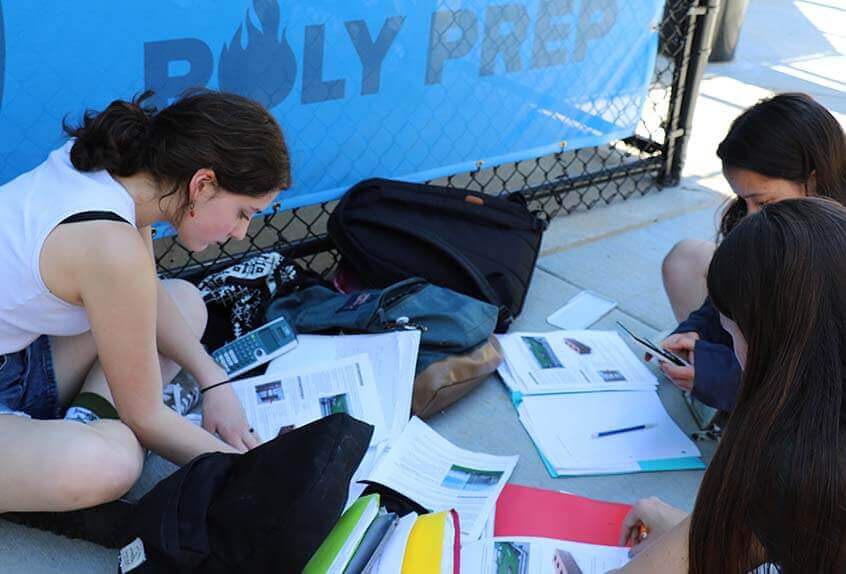
In the new outfield, Cici Malley ’25 and Mykah Lieberthal ’25 were working on one of the complex problems: Looking at the tall light poles at the far edge of the field, students were challenged to “prove the hospital in the distance is taller than the lights… and find the difference.” Feldman gave students a hint: “What you should use are your indirect measurement skills and a very neat sketch.” The students used a tape measure to count off a distance of about 50 feet back from the base of the light pole. Using a clinometer app on a phone (a clinometer is a tool to measure slope), the students were able to determine at what point along the measuring tape they had reached a 45% angle to the top of the pole. By forming this isosceles triangle, they were able to determine the height of the light pole, which would be equal to the length of the isosceles triangle.
The next challenge was determining the height of the hospital in the distance and proving it was taller than the light pole. It was a gorgeous day for CiCi and Mykah to sit in the outfield and work out the problem together.
